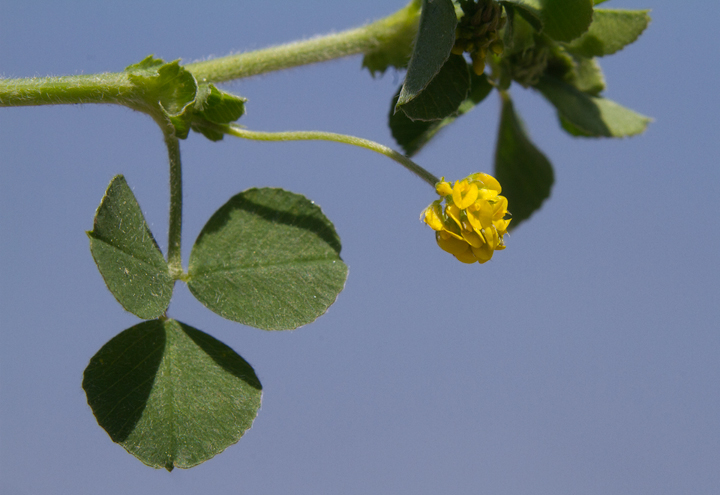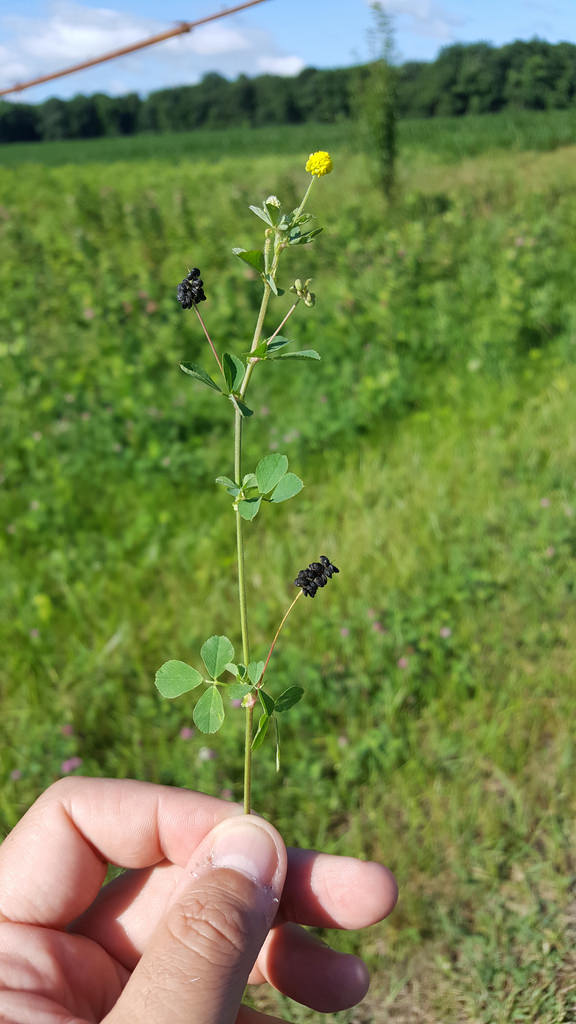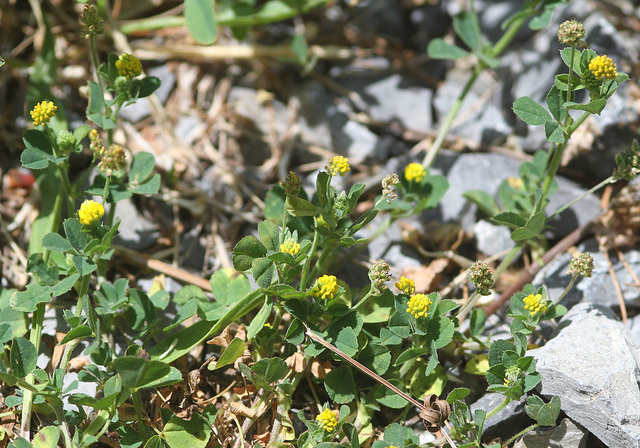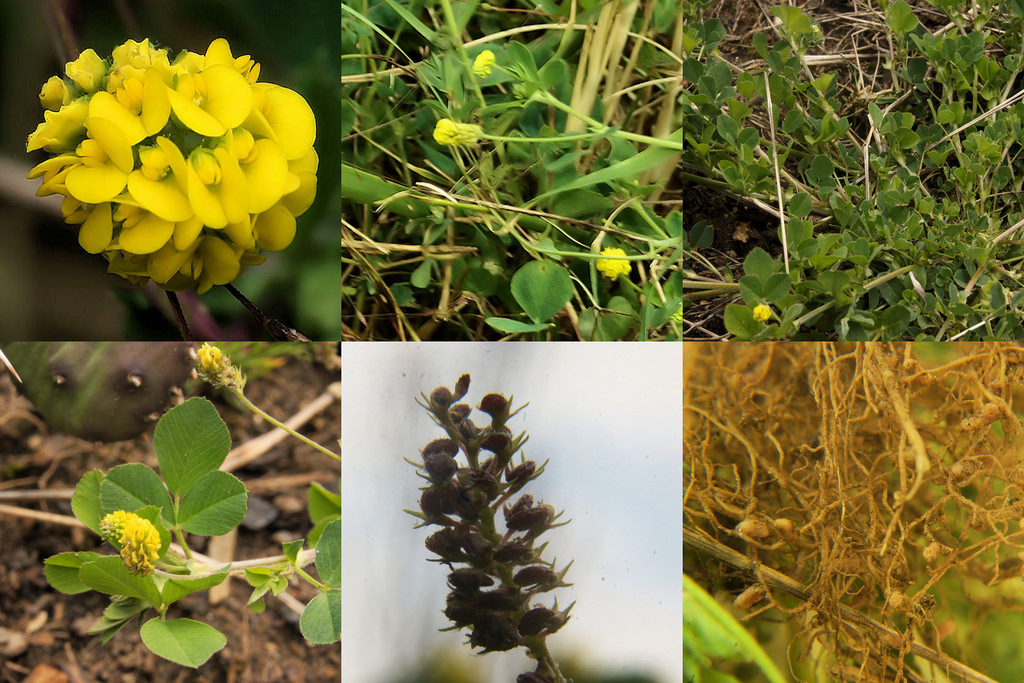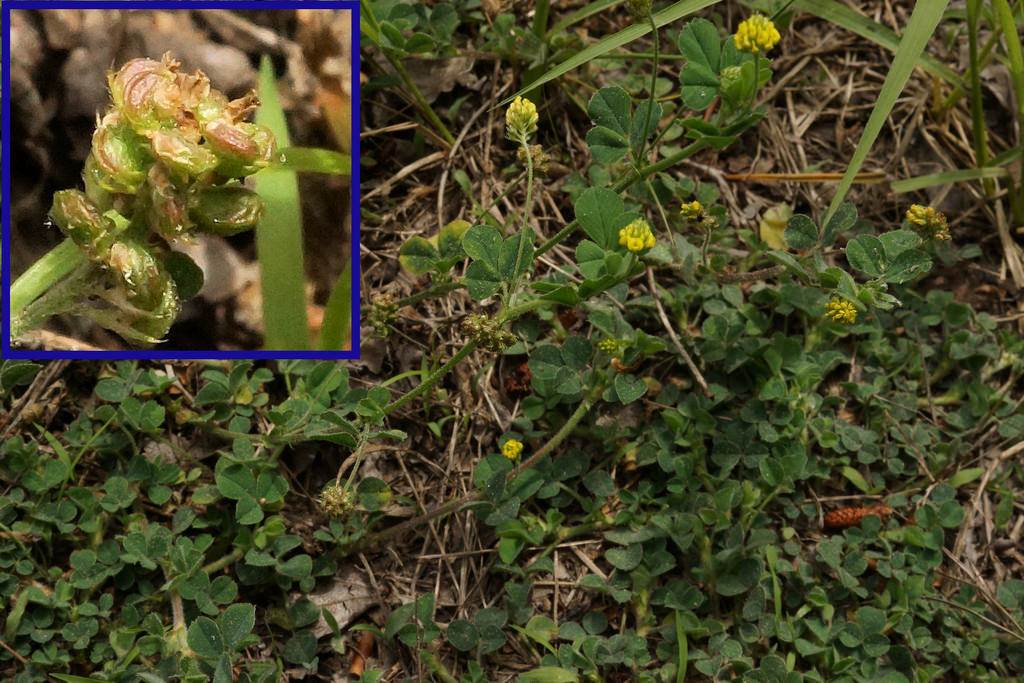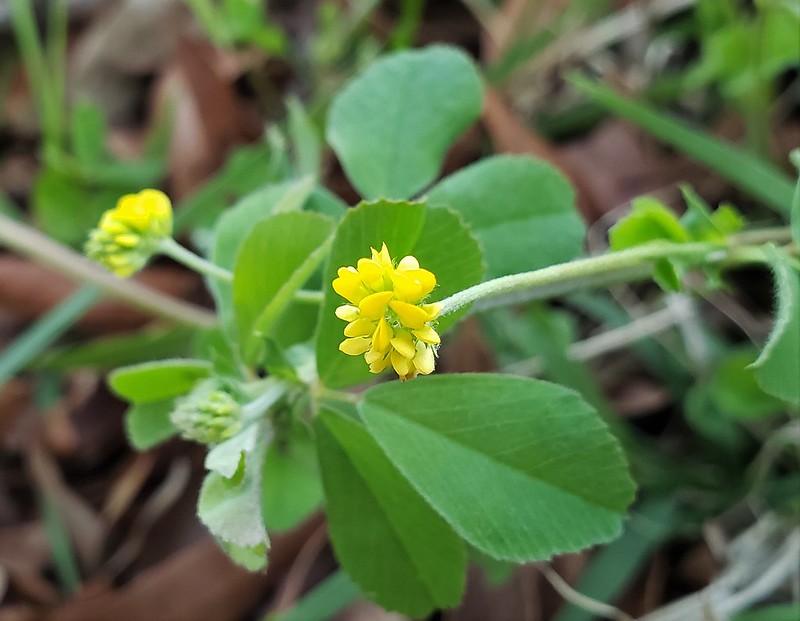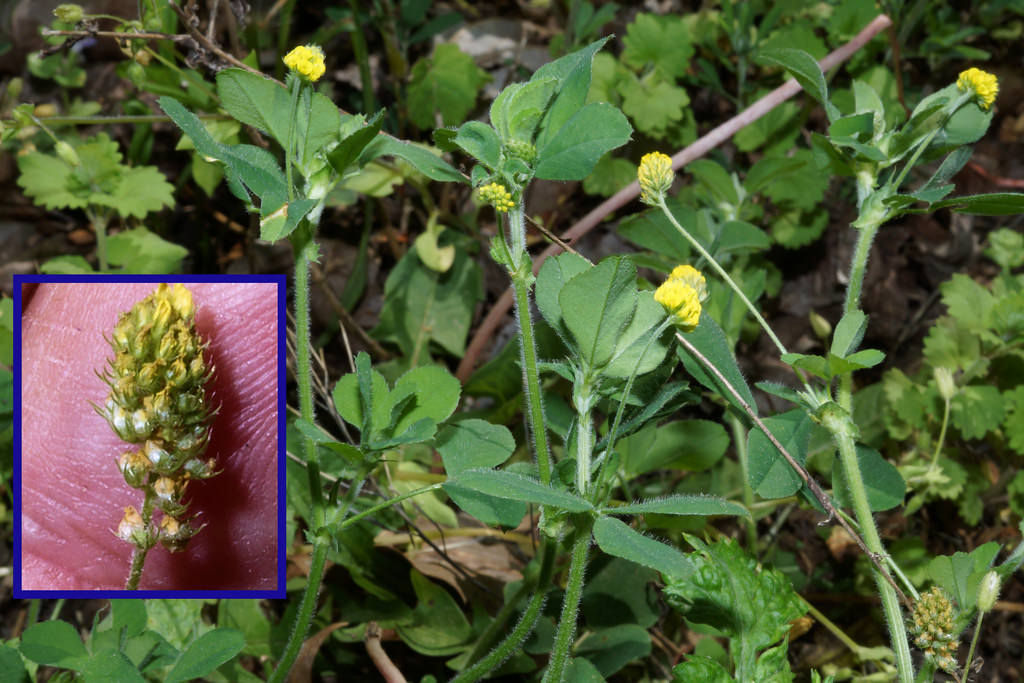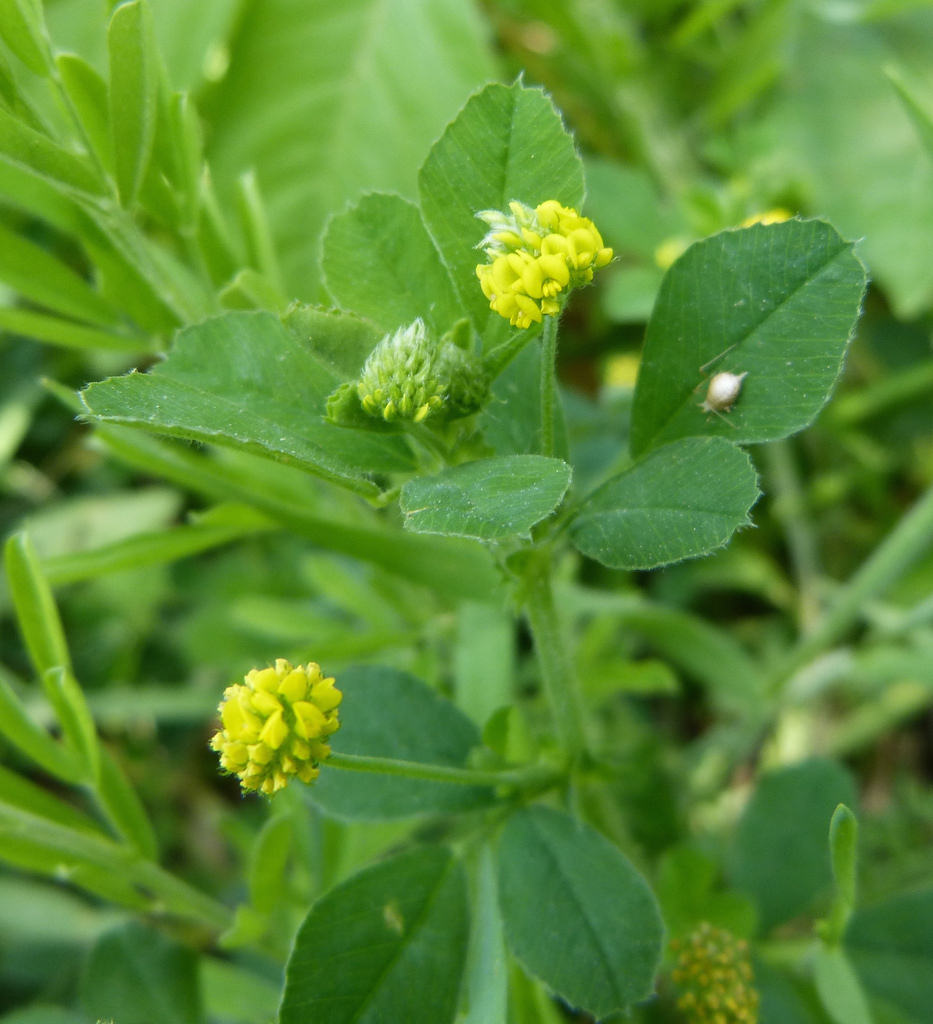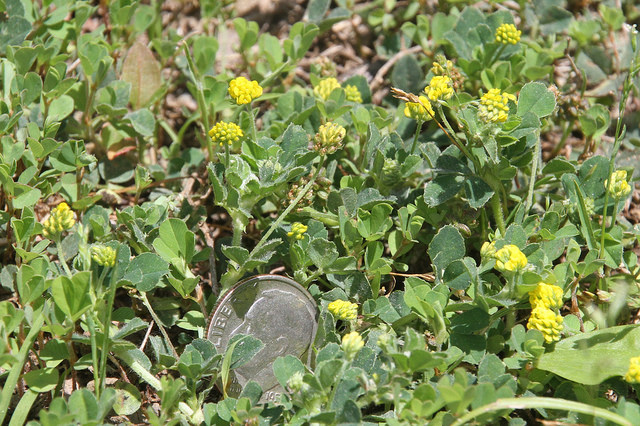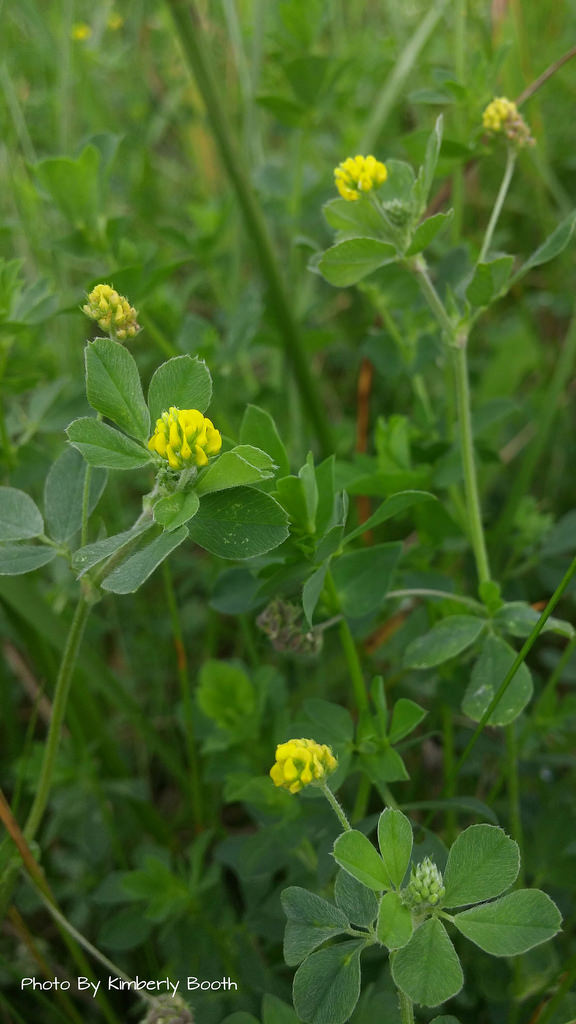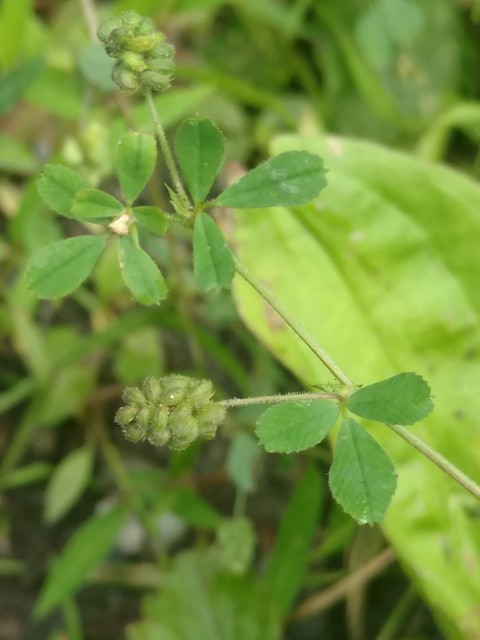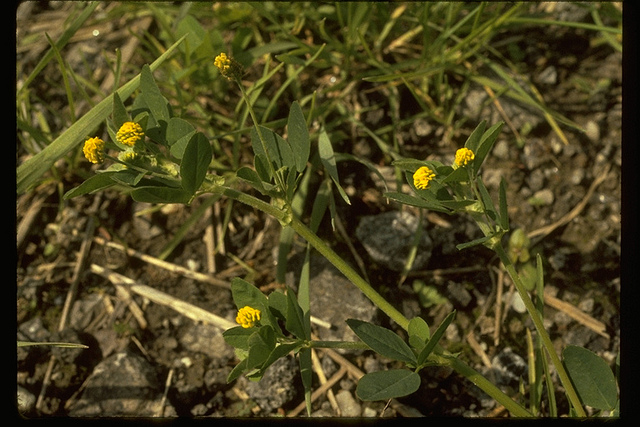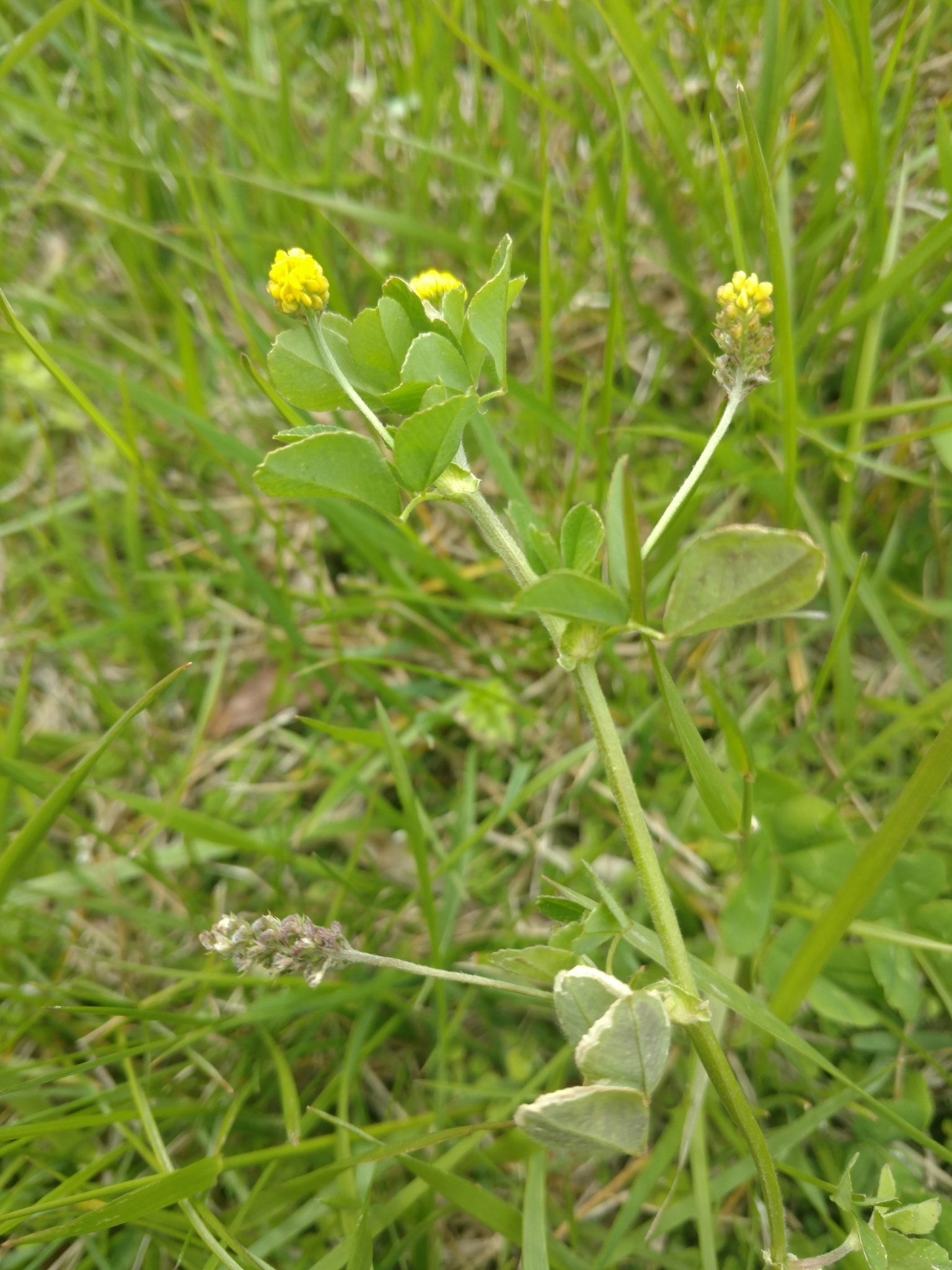



























Black Medick is native to Europe, North Africa, and most of Asia. It was first introduced to the United States in the late 1700s or early 1800s. Since its introduction, Black Medick has spread and is present in all fifty states. In Maryland, Black Medick is common throughout the state. Blooming typically occurs from late May through August, but we have records in the MBP database of plants blooming in all months except February! The Smithsonian's Flora of Washington-Baltimore Special Collections has a specimen collected in Baltimore by Donnell Smith in 1880.
Black Medick is very similar to Field Clover and care should be taken with identification. The leaflets of Black Medick typically have very small mucronate tips whereas the leaflets of Field Clover do not. The upper petals of the flowers of Black Medick are smooth while the upper petals of Field Clover are conspicuously grooved. Another easy way to differentiate between Black Medick and the Trifolium yellow clovers is that Black Medick produces black seeds that are easy to see once blooming is complete. The Trifolium yellow clovers have inconspicuous yellow/brown seeds that often fall to the ground instead of staying on the plant.
Black Medick is a common component of open road edges, fallow fields, and weedy areas across the state.
There are 294 records in the project database.
| GA | AL | WA | FR | CL | MO | HO | BA | BC | HA | CE | PG | AA | CV | CH | SM | KE | QA | CN | TA | DO | WI | SO | WO |
